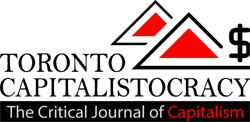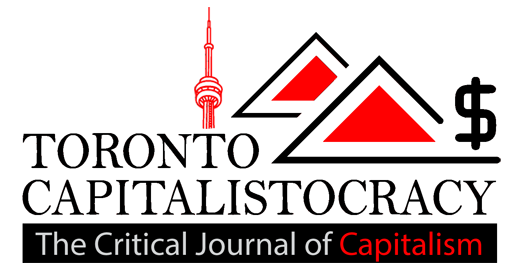Business
With IPO, Canada Goose Banks on all-weather Migration: Jennifer Wells

One was cherry red and one was Pacific blue and then hubby Henry wore a black one.
Regular devotees of Madam Secretary could not have missed Tea Leoni’s occasional habit of sporting a Canada Goose parka, even when it looked as though her more-Gucci-than-Goose character might expire wrapped in all that down.
The Canadian maker of extreme winter wear isn’t new to the world of product placement and celebrity endorsement. Witness the collaborations with Drake and Milos Raonic and the serial sightings of a parka-wearing Emma Stone or Amy Schumer in urban environments more suited to latte hunters than Everest summiteers.
This has been the genius of the brand, remaking Sam Tick’s Metro Sportswear, the rain suit maker founded in 1957, into the manufacturer of the $1,150 Callaghan parka for him and the $1,200 Liberty parka for her.
With a preliminary prospectus for its initial public offering now filed, Canada Goose Holdings Inc. is betting on three things. One, that it can grow its U.S. presence via “white space” opportunities (the Mid-Atlantic, Midwest and Pacific Northwest) and its overseas potential via markets in Germany, Italy, Scandinavia and others (Canada Goose products are sold in 36 countries). Two, that the company with the “Arctic Program” disc logo will be accepted in the marketplace as a maker of wear for three seasons, not just one. And three, that it can successfully respond to what it says is consumer interest in brand extensions beyond outerwear. Travel gear, knitwear and bedding are mentioned.
No question the company has a good story to tell. In his letter to shareholders in the IPO, chief executive officer Dani Reiss takes a page from Google founders Larry Page and Sergey Brin in defining the DNA of the company. “We have turned business challenges into leadership opportunities and intuition into insight, invested heavily when others only chased margins and we have demonstrated that ‘doing good’ is good for business,” Reiss writes. “We are not interested in trading short-term revenue opportunities for bad long-term business decisions. We are focused on building an enduring brand, a legacy for our employees and our country and long-term value for our shareholders.”
(Brin and Page famously wrote their “Don’t be evil” mantra for the Google IPO. “We believe strongly that in the long term, we will be better served — as shareholders and in all other ways — by a company that does good things for the world even if we forgo some short-term gains.”)
The Canada Goose leadership believes that what’s good for the Goose is its laudable “Proudly Made in Canada” branding distinguishing it from such competitors as North Face, Arc’teryx and Patagonia. “While many companies in our industry outsource to offshore manufacturers,” the prospectus states, “we are committed to aggressively investing in producing premium, high-quality products in Canada, the country from which we draw our inspiration.” The company has applied for a listing on Toronto and New York stock exchanges using the trading symbol GOOS.
At the moment the company manufactures about a third of its product at facilities in Toronto, Winnipeg and Montreal. It has plans to end alliances with Canadian subcontractors by bringing additional manufacturing in house and boosting its current employee count of approximately 1,200.
(To fully meet its own test, it should additionally name and provide transparent inspection reports for its six international subcontractors, which manufacture “non-core” products for the company. As of April of this year the company promises that all fur used in its products will be fully traceable.)
The challenges that lie ahead are many, including competition from the upstart “artisanal” made-in-Canada Moose Knuckles parkas (their men’s crystal parka with a crystal logo is featured online at $3,500) and companies like Patagonia, which brands itself as the “activist company” and notably donated 100 per cent of its gross Black Friday sales last November, an approximate $10 million (U.S.), to environmental organizations.
As soon as it steps out of its Arctic season, the defining characteristics of Canada Goose — exceptional warmth — blur against the competition. Will women shoppers fall for the featherweight Rosewell jacket in Sedona pink at $395? The spring offering is designed to “face high winds and light rain” and is “water resistant.” Its brand distinctiveness is unclear. Will the Goose People — brand ambassadors — get onside with this?
The Canada Goose logo has been reduced to a wordmark on the hem of the jacket. That move could come as welcome news to shoppers who found the Arctic disc about 10 times too big. But unlike, say, Lululemon, with its more subtle logo imprinted in just the right places, the Goose logo on the Rosewell jacket disappears.
A historic opportunity has been missed here. The company could have introduced a line of watertight Sam Tick rainwear for spring, running defining black-and-white advertisements of old Sam at his sewing machine. Sam Tick, by the way, was Dani Reiss’s grandfather. It is a great story.
Reiss’s letter to shareholders reminds that the company knows risk. “We intend to continue on our path of swimming upstream,” he writes. That too is laudable. The consumer will decide if the goose in spring and fall has as much to offer as the goose in the brutal days of winter.
Business
Beauty Week is back at Hudson’s Bay in Toronto and it’s time to get glam

Beauty enthusiasts rejoice! Beauty Week at Hudson’s Bay is back in Toronto for another year. It’s time to stock up on all of your fall essentials and, maybe discover some new ones.
From Friday, August 18 to Sunday, August 27, you can expect a truly elevated beauty experience in-store with incredible special offers, limited-time gifts, and exciting activations.
If you’re a diehard beauty lover, you’ll already know that Hudson’s Bay is the place to shop thanks to its extensive range of over 195 skin and makeup brands from both luxury labels and masstige brands — including Tata Harper, Estée Lauder, YSL, Nars Cosmetics, Bobbi Brown, and so much more.
Throughout The Bay’s Beauty Week, visitors can take in some at-counter activations and interactive expert-led tutorials, where there will be chances to get makeup touch-ups from top-tier brands, try a spritz of the most alluring fragrances, and sample tons of new products.
This year’s Beauty Week highlight is the ‘Best in Beauty’ tote, a meticulously-curated selection of 30 deluxe samples from an array of top-tier brands like Dr. Barbara Sturm and Shiseido spanning skincare, fragrance, and makeup — all in a super sleek bag.
The tote, which is valued at over $300, is retailing for just $39 and is a fantastic way to explore new products (without breaking the bank). However, there is a limited quantity, so if you want to get your hands on one, you’ll need to be fast.
Wondering exactly what Beauty Week’s free gifts with purchases entail? If you spend over $95 at Lancôme, you will receive a six-piece set valued at $130. Or, you can get an Estée Lauder gift valued at $170 with purchases over $80. (And that’s just to name a few.)
If you’re a Hudson’s Bay Rewards member, you’ll also get $20 in Hudson’s Bay rewards when you spend over $100 on beauty.

Business
The Canadian Armed Forces are hiring for several non-combat military jobs

The Canadian Armed Forces (CAF) have several non-combat jobs, some of which do not require a college degree or past work experience.
Life in the forces has several benefits, such as paid education plans (college, university and graduate-level programs), 20 paid vacation days, health and dental coverage for you and your family, maternity and paternal leave, and pension plans. You can learn more about the benefits in detail here.
And to make it easier to gauge if you qualify, the listings also include related civilian jobs to see if it’s your ideal role.
Financial services administrator
Related civilian jobs: Financial records entry clerk, financial manager, accounting technician, bookkeeper, budget officer, cashier clerk, business planner technician, and verification manager.
Description: You’ll help budget resources for all military activities besides providing financial assistance.
Education: You need to have completed Grade 10.
Duties: As a financial services administrator, you’ll be responsible for bookkeeping and managing budgets. You’ll also provide support in accounts payable and accounts receivable.
Work environment: Those in this role work at CAF bases, on ships or overseas. You might also be expected to help special operation units, recruiting offices, schools, and medical organizations.
Postal clerk
Related civilian jobs: Mail clerk, mail sorter.
Description: You’ll provide postal services to members and their families at bases and establishments.
Education: Grade 10. No previous work experience or related career skills are required.
Duties: As the postal clerk, you’ll handle mail duties.
Work environment: Besides a postal office, you may work on a ship or a mobile postal van. You might be expected to serve with Royal Canadian Navy, the Army, and the Royal Canadian Air Force in Canada and abroad.
Dental technician
Related civilian jobs: Dental assistant, dental hygienist.
Description: You’ll be helping dental officers provide dental services to CAF members, their families, and dependents.
Education: Level II dental assisting diploma from an accredited college or a National Dental Assisting Examining Board (NDAEB) certificate.
Duties: Those in this role will be responsible for various responsibilities, including disinfection and sterilization of dental equipment, applying rubber dams, placing cavity liners, and controlling bleeding. In addition, you’ll assist in laboratory procedures like creating casts, custom trays, and mouthguards.
Work environment: This role will require you to work in a military dental clinic, a Mobile Dental Clinic, an Air Transportable Dental System, or onboard a ship. You might be expected to work on a base in Canada or other operations in other parts of the world.
Human resources administrator
Related civilian jobs: Records administrator, data entry supervisor, receptionist, office manager, executive assistant, payroll clerk, and information management technician.
Description: Provide administrative and general human resources support.
Education: Grade 10. No previous work experience or related career skills are required.
Duties: In addition to human resources administration and services, you’ll be handling pay and allowances, managing automated pay systems, and maintaining personnel records.
Work environment: HR administrators work at all CAF bases in Canada. They also work on ships and overseas to support the Canadian Army, Royal Canadian Navy, or Royal Canadian Air Force operations.
Medical assistant
Related civilian jobs: Emergency medical responder, ambulance and first aid attendant, registered nursing assistant, licensed practical nurse, and hospital orderly.
Description: Successful candidates will help treat the sick and injured in CAF units. You’ll be assisting and supporting nursing and medical officers.
Education: Minimum of Grade 11 biology, Grade 10 physics or chemistry, and Grade 10 math.
Duties: You’ll provide initial care and essential life support treatments in trauma cases. You’ll help with health assessments (hearing and vision tests, perform basic lab procedures, etc.) and initiate and manage medical records and reports. You’ll also be expected to provide support and first aid during training exercises.
Work environment: Medical assistants may serve with the Royal Canadian Navy, the Royal Canadian Air Force or the Canadian Army as part of the Canadian Forces Health Services Group. Those in this role are exposed to the same risks as the forces they support.

Business
Porter’s new loyalty program promises to match Air Canada’s Aeroplan status

Porter Airlines is once again stirring the pot among Canadian airline rivals, now going after Air Canada’s Aeroplan members by offering to match their loyalty status to an equivalent of their own.
The beloved airline, which recently ranked as having the best cabin service in North America, challenged the competition for the second time this year, after previously deploying a similar tactic against WestJet in the spring.
Earlier in April, Porter presented customers with a limited-time offer to match the loyalty status of WestJet’s patrons with VIPorter levels.
Now, they’re offering Aeroplan members to seamlessly transition to an equivalent VIPorter Avid Traveller status based on their existing membership tier.
Members can then take advantage of an array of travel perks that come with flying Porter, including seat selection, baggage, and flight changes.
For those currently holding an Aeroplan membership, there are two ways to acquire the Avid Traveller status for the rest of 2023:
Status-Based Match:
- Aeroplan 25K members = VIPorter Venture
- Aeroplan 35K members = VIPorter Ascent
- Aeroplan 50K, 75K, and Super Elite = VIPorter First
Flight Segments-Based Match:
- 5 flight segments = VIPorter Passport
- 8 segments = VIPorter Venture
- 17 segments = VIPorter Ascent
- 28 or more segments = VIPorter First
Members will have to first submit their applications on Porter’s website. Registration will remain open until September 6, 2023.
In order to maintain their membership level through 2024, customers will have until the end of 2023 to reach the following reduced qualifying spend (QS) targets:
- Passport = $500 in QS
- Venture = $750 in QS
- Ascent = $1500 in QS
- First = $2500 in QS
Over the past year, Porter has launched an aggressive expansion strategy, including everything from introducing longer flights on newly-purchased jet planes flying out of Toronto Pearson, free WiFi, and a new all-inclusive economy experience.
With Canadians losing both Swoop and Sunwing as WestJet incorporates both into their mainline business, Porter’s direct competition is welcome to keep prices competitive.




